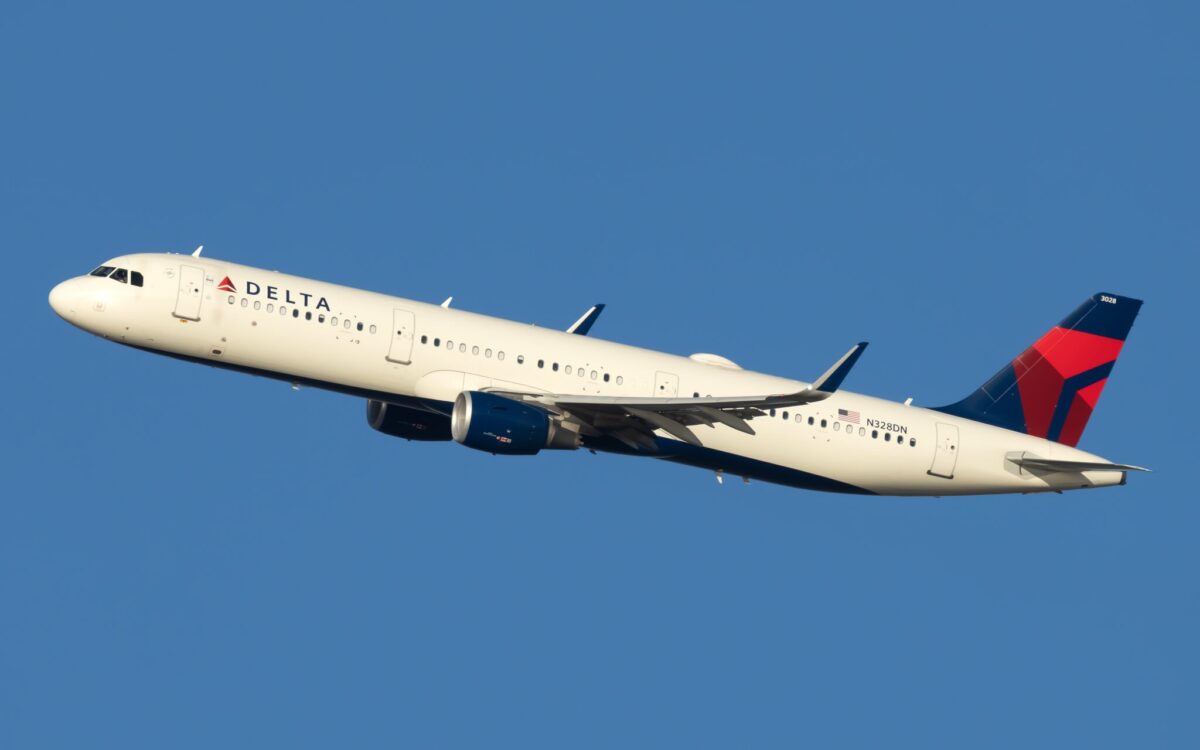Executive Q&A: Reimagining Global Payments to Strengthen Travel’s Recovery

Skift Take
Today, with a new mandate to keep customers safe from Covid-19, hotels, online travel agencies (OTAs) and other travel suppliers are expanding digital pre-payment options to bring peace of mind to their customers. In a marketplace where considerations around safety and hygiene have become more important than price, frictionless payment solutions are imperative. And as customers grow accustomed to the convenience of such transactions, they’ll expect to continue using them.
SkiftX spoke with Eric Liebman, head of travel at Ingenico ePayments, about how travel businesses are responding to new customer demands by expanding contactless transactions beyond the airline industry, and how the global payments landscape will evolve as travel rebounds.
SkiftX: How has the Covid-19 pandemic shifted the role of global payments when it comes to customer experience, trust, and safety in travel?
Eric Liebman: Trust is everything in the travel industry. Against the backdrop of the pandemic, that trust now extends to how travel suppliers are keeping their customers safe from Covid-19. Global payments have been thrust into the spotlight, as social distancing necessitates finding a way for customers to pay for services without human intervention.
While airlines have been using digital pre-payment for nearly two decades now, other segments of the travel industry have not followed suit, and are now having to re-think how they can process payments remotely and securely. Ingenico has been evangelizing pre-payment as a benefit to both customers and suppliers, and with Covid-19, most major travel companies are far more engaged with us about how they can enable secure app- or web-based payments to help their customers feel safer.
SkiftX: How are travel businesses and service providers responding to new customer demands when it comes to global payments?
Liebman: We are seeing a massive shift towards digital payments as a way of maintaining protocols to support social distancing. Think of the traditional hotel lobby, where guests queued up to check in with their credit cards. We are now working with the major hotel chains on how to support guests going straight to their rooms without a stop at the front desk. As an added benefit, these hotels can now provide alternative payment methods previously unavailable to their guests, such as WeChat Pay, Sofort, installment plans, and so forth. Prepayment not only makes the process of booking easier for the travelers, but also offer better cash flow and inventory management for the travel companies.
We are also closely monitoring where travelers are paying, and what they’re paying for. Overall, our internal data shows mild recovery of the travel sector comparing to the middle of April, which was the lowest point of travel transaction volumes. In fact, the volume of transactions in China didn’t fall as drastically as in other markets and has been growing over the last few weeks. Of course, when it comes to the airlines, the pick up of bookings is slower comparing to other industries. At the same time, with Europe coming out of lockdown in summer, we saw steep growth in OTA and hotel transactions. A lot of this was driven by staycations and new experiences that online travel agents brought to their mix. But we remain cautiously optimistic.
SkiftX: How do you think the global payment landscape will evolve throughout the travel industry over the next few years as travel rebounds?
Liebman: The global payment landscape is going to be front and center for the travel industry. Whereas before payments was simply considered a necessary part of the customer journey, now most of the players are seeing the need to personalize payments for their customers as a way of differentiating themselves. Accepting local payment methods and installments, and allowing most currencies to be accepted natively are ways in which these suppliers can provide a better buying experience for their customers. Booking for travel should be easy, almost invisible. After all, nothing happens until the payment is approved!
SkiftX: We’re seeing a rise of contactless payments across all industries, including travel, due to new health and safety measures. Can you talk a bit about this shift?
Liebman: There is no question that safety and hygiene are now the benchmarks upon which travel suppliers are being measured. Price is actually becoming less important as people seek to ensure safety from Covid-19 while traveling. Airlines have been successfully removing face-to-face interaction through their apps, websites, and self-check-in kiosks for years, and now other parts of the industry are finally moving to pre-payments as a way of supporting a more contactless experience. This should continue to become the norm, even post-recovery, as it enables a seamless and convenient experience for most travelers.
SkiftX: On that note, can you expand on the benefits of contactless payments for businesses beyond reassuring customers about health and safety standards?
Liebman: Travelers don’t really enjoy queuing up and waiting, especially when they’re eager to just “get there.” Contactless payments allow customers to move at their own pace and eliminate the need to wait for service. Whether it’s in a restaurant waiting for a server, in a hotel lobby, or in the check-in line at an airport, having a way to skip the line and pay all charges in advance allows the customer to move freely. Plus, from a manpower perspective, suppliers can save on labor costs since kiosks, apps, and websites can do the heavy lifting instead of clerks at desks.
Although many experts are talking about contactless experiences right now, online and mobile payments have been available for a long time. Pre-payment allows travel companies to focus on the experience rather than on assuaging frustration among travelers waiting in long lines for services. The goal should be to provide intuitive, relevant ways for customers to pay for their services with a strong payment partner who not only understands travel but has a very innovative strategy to help keep their customers ahead of the curve. Think things like chatbots and voice commerce allow travelers to add and upgrade experiences on the go, with just one click. Or using tokens to make the process of paying feel almost invisible.
SkiftX: Many travel providers are dealing with much smaller budgets and limited resources due to the pandemic. How does having a strong global payment strategy in place help businesses manage extraneous costs?
Liebman: One of the key benefits of having one global payment processor is the power of negotiation and ability to centralize and optimize your cost while offering convenient payment options to your customers. Conversely, with the full volumes that come with processing with one partner, you are able to benefit from the economies of scale and better pricing. It is important that your systems are already integrated with a payment provider. For example, if you are an airline and using Global Distribution System, selecting payment providers that are integrated with your GDS will save you time and money. At the same time – and of course depending on the local offerings of your payment provider – you can benefit from local processing rates, which are normally lower, without the need to build new connections for main and new markets.
SkiftX: Are there any specific industries that have been early in getting global payments right? What can the travel sector learn from them?
Liebman: Clearly, the airline industry got this right early on. They’ve had a consistent global payment strategy for nearly 20 years. While they can always do better, their process of managing payments for direct, digital, and agency sales has allowed most customers to pay in their own currencies and often with their own payment methods, which makes booking and paying easier and more familiar to them.
Other parts of the travel sector would do well to take a page from their playbook and move towards a fully prepaid model offering all flavors of currency and payment methods for their customers, no matter where in the world they are.
Prepaid also lends itself to better cash-flow and better inventory management, since suppliers will have a more predictable take-up rate for their products with travelers more dispensed to consume them than cancel. Prepaid does not have to mean ‘non-refundable’ either, so suppliers can manage their prepaid rates from fully restrictive to fully flexible to ensure they meet their customers’ needs.
SkiftX: What is some advice you can give to travel providers who are considering rethinking their global payment strategy to survive this challenging time?
Liebman: First and foremost, put your customers at the center of your payment strategy. Imagine a day in the life of someone trying to book your product from as many different countries and with as many unique and local methods as possible. Is it a great experience? Was it intuitive? Did the payment process take into account their preferences? Was the acceptance rate acceptable? Most travel suppliers are manic about trying to meet customer expectations by looking at past preferences, but how many take payment methods into account? Think of that before making changes as you’ll be telling your customer that you both understand them and that you’re doing all you can to exceed their expectations when they pay.
Making payments convenient for your customers should be essential in the approach. You need to know how your travelers and guests want to pay, and then make the process simple. Then you can focus on making the actual travel experiences exciting and unforgettable.
Tune in to Skift Global Forum on September 22 to hear Eric Liebman in conversation with Laurie Gablehouse, Head of Travel Solutions Ingenico ePayments and Gertjan Dewaele, Product Innovation Lead Ingenico ePayments who’ll discuss how global payments can strengthen travel’s recovery.
This content was created collaboratively by Ingenico ePayments and Skift’s branded content studio, SkiftX.




